In the sunny coastal town of Bolinao, Philippines, archaeologists stumbled upon a discovery that would forever change our understanding of ancient Filipino culture. Among 67 other Ming Dynasty skulls and pottery, they unearthed a truly remarkable find: the Bolinao Skull.
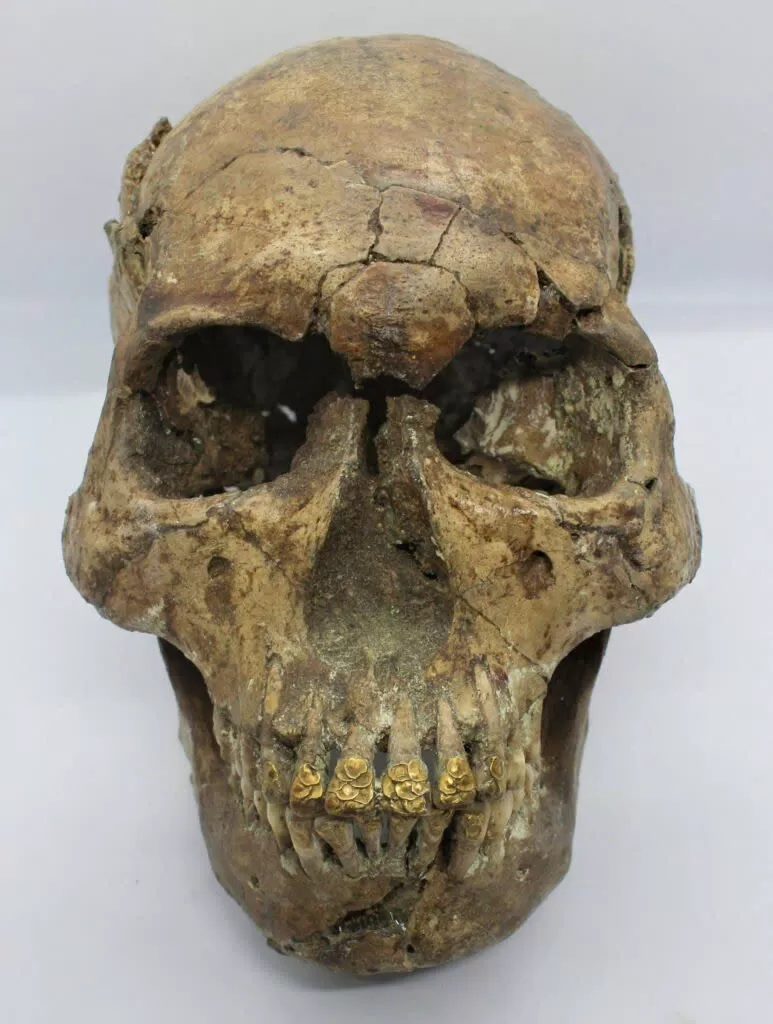
A dazzling dental discovery
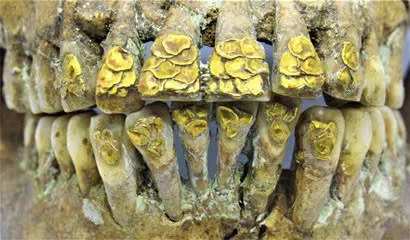
This skull, dating back to the 14th or 15th century AD, held a secret that left researchers stunned. Upon closer examination, they discovered intricate gold dental ornamentation adorning its teeth. Delicate flecks of gold, arranged in a fascinating fish-scale pattern, decorated both the upper and lower teeth.
Masterpiece of ancient craftsmanship
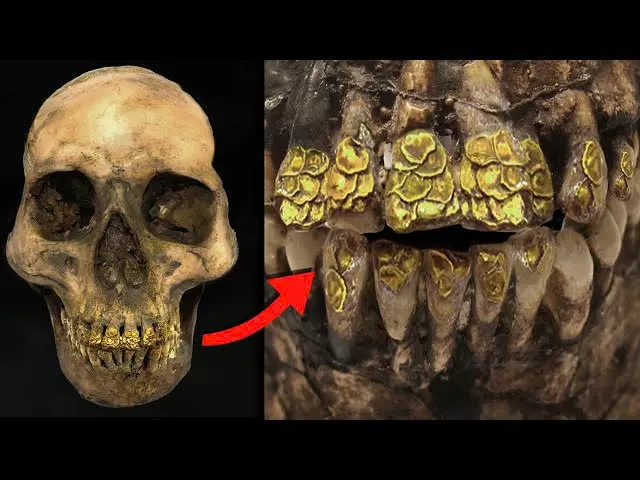
This was no ordinary dental job. It was a true masterpiece that showcased the exceptional skills of ancient Filipino craftsmen. Gold discs, plugs, pins and wire were meticulously inserted into the holes drilled into the teeth, creating a dazzling display of ancient cosmetic dentistry.
More than a nice smile
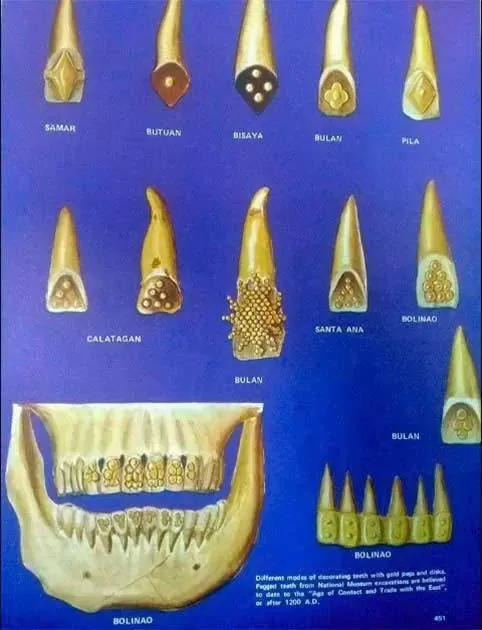
The golden smile of the Bolinao skull offers us a unique window into the lives of early Filipino natives, their social structures and cultural practices.
Symbol of prestige and beauty
In ancient Philippine society, dental work with gold was not only for aesthetic purposes. It was a powerful symbol of prestige and beauty, and its origins date back to earlier practices of staining teeth with plants and roots.
Evidence of a forgotten practice
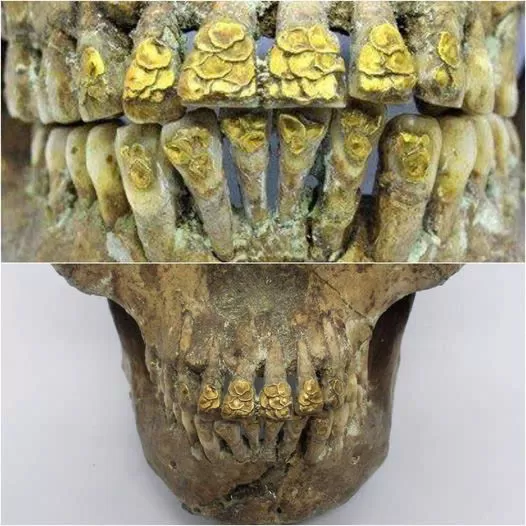
Early explorers, such as Antonio Pigafetta, who accompanied Magellan on his 1521 expedition, documented the widespread use of gold dental ornaments among native tribes. The Bolinao skull is tangible evidence of this nearly forgotten aspect of Philippine history.
Beyond the Smile: Discovering Ancient Philippine Society
Trade and cultural exchange
The presence of Ming Dynasty pottery at the burial site provides a picture of a sophisticated society engaged in international trade and suggests that highly developed trade relations existed during the Middle Ages, long before the formation of the modern Philippines.
Funerary customs and social hierarchy
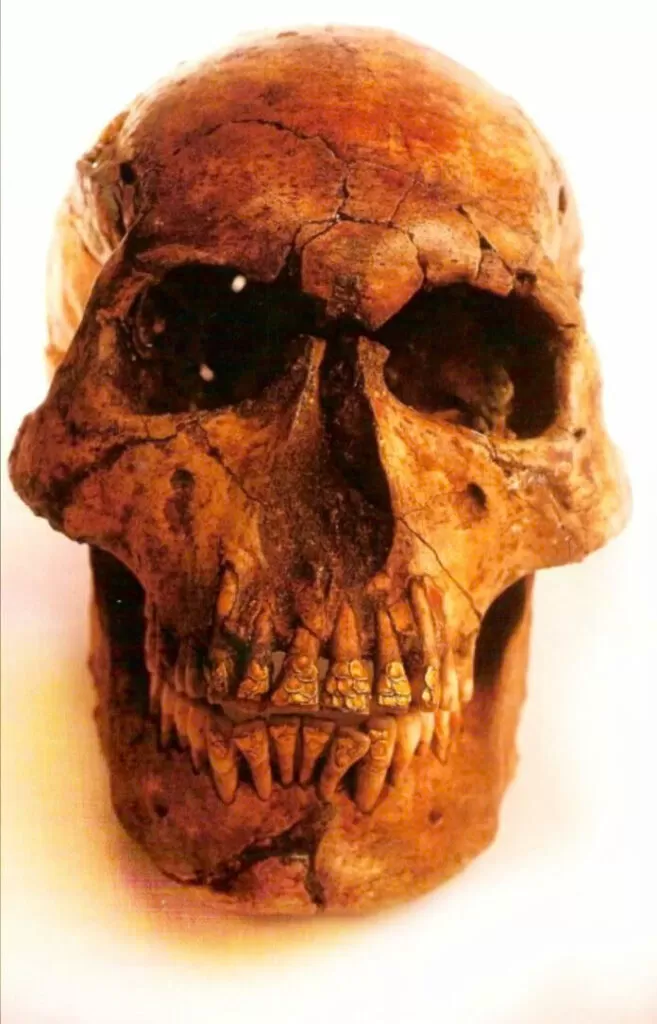
The context in which the Bolinao skull was found provides insight into ancient burial practices and social stratification. The elaborate nature of the dental work implies that its owner held an important position within his community.
A national treasure
Today, visitors can admire Bolinao’s skull at the Pang-ulo exhibition on the fourth floor of the National Museum of Anthropology in Manila. This gold-toothed wonder continues to captivate researchers and the general public alike, and is a shining example of the Philippines’ rich cultural heritage.

As we gaze upon the bright smile of Bolinao’s skull, we are reminded that sometimes the most valuable treasures are the stories they tell: stories of ancient cultures, forgotten practices, and the enduring human desire to adorn ourselves with beauty and prestige






